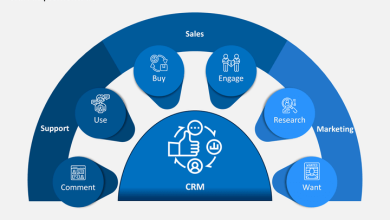
Applying for a mortgage is always a tough process. Your mortgage lender will ask you for a variety of financial documents whenever you apply for a mortgage, these documents include bank statements, proof of address, and more. Your bank statements tell your lender everything they need to know about your financial health. In recent years, the rate of mortgage fraud has grown exponentially. As the covid-19 pandemic hit the world, millions of people lost their jobs, this gave a rise to mortgage fraud. This is one of the major reasons why bank became more strict with their verification process. Here’s all you need to learn everything about using bank statements for your mortgage.
What is a Bank Statement?
Bank statements are monthly or quarterly documents offered to you by your banks summarizing your banking activities over a specific time. Your bank can send you statements using Email, physical mail, or both. Banks issue bank statements to help users keep track of their money and detect any anomalies in the transactions. Let’s say you have a savings account and a checking account, your statement for each month for both accounts will be included in a single account statement. This is why lenders have the need for bank statement verification as it offers all the details of a person’s financial health.
Your bank account statements will also provide thorough details of how much money you have in your account. It will also contain a breakdown of the financial activities you’ve done over a particular period, including all the deposits and withdrawals.
- Deposits
Deposits mean the money that’s been put into your account, be it by you or by someone else. Direct deposits, checks cashed and wire transfers make up most of your deposits. Your bank also deposits money into your account as interest you earn on the amount you have in your account. ‘
- Withdrawals
Withdrawals refer to the money that’s been transferred out of your account. The withdrawals happen when you make a purchase, use an ATM to withdraw cash, or send money online to someone else. All these activities are shown as withdrawals on your bank statements.
Why Do Mortgage Lenders Need to See Bank Statements?
If you’re working under an organization’s payroll, you’ll need to give your mortgage lender bank statements and recent pay stubs. If you’re self-employed, then you can’t submit pay stubs, so you’ll need to submit your tax returns and other documents that are required by lenders.
Once the banks have all the information, why do mortgage lenders need bank account information? The basic need for bank statements is because they need to verify if the person applying for a mortgage has enough money in their account or not to make monthly payments. It is a lender’s job to verify if the person who’s applying for a mortgage has enough money to make a few months of payments.
Your mortgage lenders also need your bank statements to make sure that your assets are “sourced and seasoned”. These two factors are incredibly important for mortgage approval.
- Sourced means that your bank can understand where the money is coming from.
- Seasoned means the funds have been in your account for a long time. Having funds that are credited and debited over and over again can be a red flag for mortgage lenders.
Verifying both sourcing and seasoning helps banks prevent fraud and money laundering. It also leads them to understand that you’re using the money acquired by banks for your down payment.
The last thing your lender needs to use in the bank statements is to verify if a person has enough money in their bank account to cover the closing costs. Closing costs are an average of 2-5% of the total cost of your loan. Another thing the mortgage lender will look at is the liquid cash to make sure that you didn’t forget to keep some money on the side to finalize the loan.
How Many Bank Statements Mortgage Lenders Requires?
Most mortgage lenders require only two bank statements. Lenders ask for more than one statement because they want to make sure that you haven’t borrowed money from someone to qualify for the mortgage. Two statements are ideal because any financial activity beyond 2 months will already show up on the credit report.
How to Get Your Bank Statements?
If your bank doesn’t automatically send bank statements, then users can get bank statements by themselves using the bank’s website and application. Here are the simple steps to get bank statements for a mortgage application:
- Log On To Your Account
Visit your bank’s website and log in to your bank account. If you aren’t aware of your login details, you can call your bank’s customer service and ask for your help.
- Locate Your Statements
On most websites, you’ll find a section named “documents or statements” on the website or the settings section of the app. You may need to go through a variety of settings to finally reach the documents tab.
- Download Your Statements
Once you locate the bank statements, you will see a list of PDF files based on dates. Find the statements required by your mortgage lender. Download them, save them locally and name them in a way your lenders can understand easily.
What Red Flags do Mortgage Lenders Look for in Bank Statements?
Lenders use a process named “underwriting” to verify your income and financial health. Underwriters conduct a lot of research and assess the level of risk the person who’s applying for the mortgage poses. Here are the most common red flags that underwriters look for when they check your bank statements:
- Unstable Income
Unstable income is the biggest red flag that can be in your bank statements. Lenders need to know that you have enough money coming in every month to make the mortgage payments on time. Underwriters look for regular income sources, these would include paychecks, royalties, etc.
If your income changed by a lot in the last two months, your lenders will want to know why? If you’ve received a sudden hike in your monthly income, having a written proof is always a good thing.
- Low Savings Account Balance
If you lost your job or if you came across an unexpected expense, will you be able to make the payments? Lenders would want to know if you have enough money or enough savings to bounce back on your feet and make the payment. They also want to verify if you can pay the down payment and closing costs without help.
- Overdrafts
Overdrafts are another red flag that underwriters look for. They are shown in your bank statements when you spend or withdraw more money than available in your account. Most banks charge an overdraft fee and underwriters look keenly for these. Once or twice can happen to everyone, but regular overdrafts are a huge red flag for mortgage lenders.
Conclusion: Bank Statements for Mortgage Lender Verification
Lenders need to verify bank statements before approving a loan because the statements tell everything there is to know about a person’s income. Your bank statements also tell your lenders how much money comes into the account and how much money is taken out of your account.




